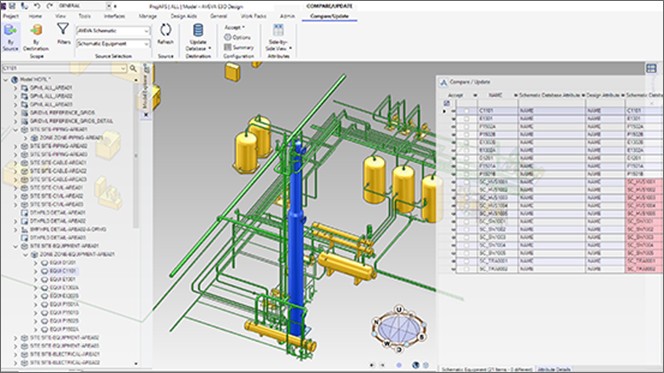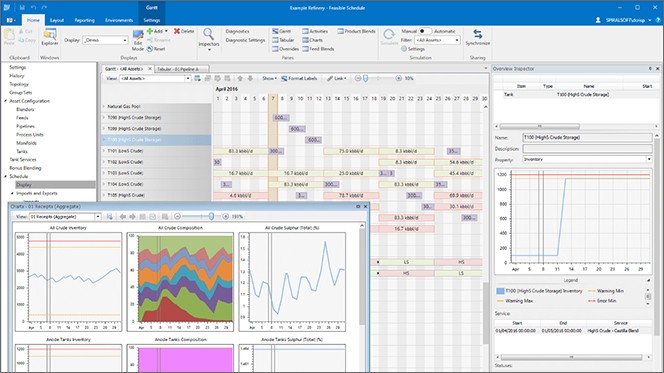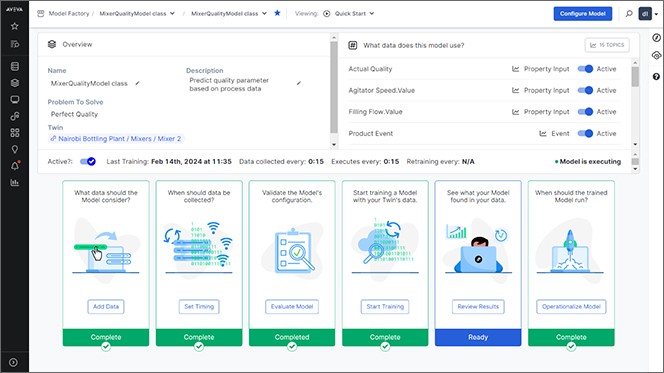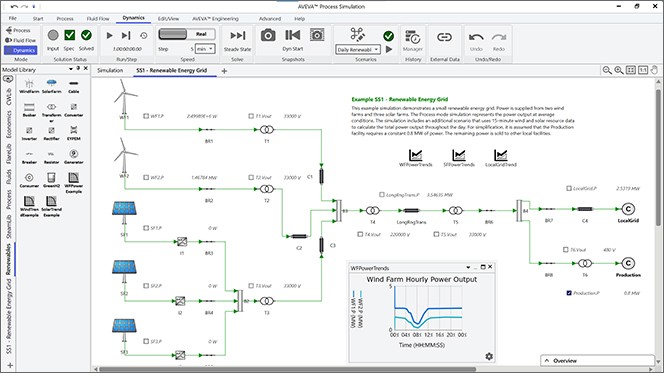Drive smarter decisions, sustainable growth, and continuous innovation.
More than just technology, Industrial AI integrates domain and industry expertise into processes and workflows by embedding artificial intelligence (AI) across the full industrial lifecycle.
AVEVA’s Industrial AI transforms how industries innovate and operate by leveraging AVEVA’s Industrial Intelligence platform, CONNECT, to integrate models, clean data sets, and more, ensuring AI is scalable, accessible, and able to deliver actionable insights with fast ROI.
This connected approach allows Industrial AI to drive innovation on autopilot, compounding value across the full industrial lifecycle, optimizing design, streamlining scheduling, improving production, and enabling predictive maintenance.
Industrial AI for your business
Leverage deep domain expertise to integrate AI and analyses into workflows and processes across the full lifecycle, de-risking the burden of adoption and delivering actionable insights for faster, more informed decision-making.

Rapid, open data analyses and architectures
- Fast, scalable qualitative data analysis
- Open, agnostic platform functions independent of data source and format.
- Exceeds capabilities of humans or traditional software

Navigate complexity
- Automate complex processes
- Analyze vast datasets
- Adapt to new information continuously

Innovate on autopilot
- AI-powered digital twins with
real-time data deliver compounding benefits over time across the full lifecycle. - Complete workflow and process integration deliver fast scalability and ROI.
- AI continuously learns, adapts, predicts, simulates, and prescribes.
14x ROI
and $17.4M in cost savings at Petronas
10%
material savings at Nestle
4.6%
reduction in energy consumption at Acciona
$36M CAD
in cost savings at Suncor
Use cases
- Use Case 1
- Use Case 2
- Use Case 3
- Use Case 4
- Use Case 5

Boost efficiency and automation with AI-driven insights
Streamline workflows and reduce manual effort through automation, helping teams work smarter and faster. AVEVA ’s advanced 3D modelling and real-time updates accelerate plant design and optimize production processes.

Strengthen supply chain resilience with AI
Improve demand forecasting, inventory management, and logistics to reduce the impact of disruptions. AVEVA ’s planning and scheduling solutions help balance capacity, labor, and materials to keep operations on track.

Bridge labor gaps by empowering your workforce with AI
Automate repetitive tasks and streamline data access to boost productivity and decision-making. AVEVA ’s digital workflows and connected insights enhance workforce skills and efficiency.

Drive sustainable growth with intelligent, resource-efficient operations
Optimize resource usage, reduce waste, and minimize CO₂ emissions through continuous process improvements. AVEVA ’s eco-friendly simulations and real-time advanced analytics ensure compliance and sustainability.

Make smarter, data-driven decisions to optimize reliability and performance
Leverage AI-powered anomaly detection and prescriptive insights to catch issues early and minimize downtime, enabling more reliable and resilient operations.
Experts in Industrial AI
IDC vendor profile
AVEVA's Industrial Intelligence powers engineering, operations, and optimization solutions and services
“With the intent to optimize with AI software that puts any customer's technology and human insight to work, AVEVA's AI-based solutions provide the agility to respond to changing conditions in real time for greater safety, profitability, and sustainability. These solutions are purpose built for industry and application requirements and integrate AI technology and machine learning capabilities. This enables a constant state of self-optimization through autonomous and semiautonomous processes.”
Partnerships
AVEVA announces partnership with Databricks
The partnership unlocks the full potential of your data and AI investments, enabling you to derive deeper insights, make data-driven decisions, and drive operational efficiency and sustainability.
Ethics and Responsibility
Guided by integrity:
Our commitment to responsible innovation
At AVEVA, we uphold integrity in every innovation, ensuring our AI-driven solutions are secure, trustworthy, and designed with customer privacy in mind.
FAQs
Industrial AI refers to a range of mathematical techniques that recognize patterns, detect anomalies, provide expert guidance, and predict future outcomes. AVEVA’s Industrial AI integrates AI throughout the entire industrial lifecycle to inform better decision-making, accelerate innovation, optimize design, streamline planning and scheduling, improve production, and enable predictive maintenance.
At AVEVA, customer data is never blended to train or fine-tune generative AI models, ensuring privacy and security and protecting intellectual property. AVEVA’s approach prevents data blending between customers, ensuring a secure and trustworthy AI experience.
The data integrity and transparency of AVEVA AI Assistant is guaranteed by using citations that clearly show data sources and values, enabling users to validate results quickly and act with confidence.
Robust guardrails ensure questions are specific and focused on industrial use cases. Out-of-scope queries won't be answered, and if relevant data is unavailable, AVEVA AI Assistant will inform you instead of searching the internet, ensuring accuracy and reliability.
AI is not here to replace human jobs, but to augment human intelligence and enhance productivity. Rather than eliminating roles, AI automates repetitive tasks, much like Excel replaced manual arithmetic, allowing professionals to focus on higher-value work.
AI-driven applications can recognize patterns, generate content, assist in scientific breakthroughs, and optimize decision-making across industries. These advancements are transforming workflows, requiring us to adapt by applying, analyzing, and refining the insights AI provides. The future of work lies in collaboration between humans and AI, where technology handles the routine, and people drive strategy, creativity, and critical thinking.
Events and Webinars
- Webinar
Transform Asset Reliability with Generative AI
- Webinar
Data intelligence & Generative AI for reliability
- Presentation